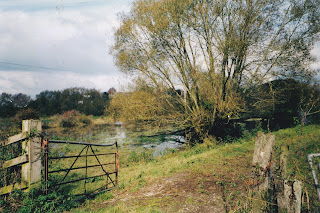Blogtober 5 - Travel pictures
I did one of those facebook things to share 10 travel pictures over ten days recently. The hardest part of it was to not put a comment with each one. I enoyed looking through and choosing the photos and remembering the places where they were taken so decided to share the stories behind them here instead.

Snowdon, Snowdon Massif in North Wales. Taken on the Watkins path looking along the ridge. Not an easy route with some challenging scree scrambles but fantastic views.

Rue de l'Enfer, Sables D'Olonne, France. Listed in the Guiness book of records as the narrowest street in the world.

An 8 foot tall bronze sculpture of King Arthur at Tintagel, North Cornwall, England. The statue is officially called Gallos which is the Cornish word for power. There is a lot of history in this area but most of it is so intertwined with myth and legend that it is difficult to know what is real and what is not. A very dramatic and atmospheric place though.

Sun setting behind a Breton lighthouse as we pass along the rocky French coast.

We stayed in a gite in Normandy, France a couple of times for lovely holidays with the extended family. These donkeys live in the grounds of the gite and were very friendly.

Looking up at our main sail and jib as we travel along the French coast under a beautiful blue sky. The French courtesy flag is flying from the spreader

This head popping out of the ground is one of the many magical sculptures, artworks and other surprises that can be found at Heligan Gardens in South Cornwall, England. Known as The lost gardens, the history is fascinating. The grounds became massively overgrown after the loss of gardeners and other staff during the second world war. After they were shut up they were not rediscovered until many years later when someone wondered what was behind an overgrown door. Renovation work has uncovered many things and they are now a recognised Commonwealth war memorial site as well as claiming to be one of the finest gardens in England.

This picture was taken at the Three Kings Parade in Gijon, Asturias, Northern Spain. The confetti which fell like rain throughout the parade can be seen in the air, by the end it was thick on the ground. Bagpipes are traditionally associated with Asturias. Held around Epiphany (6th January) this Christian feast day is important throughout Spain and many other parts of mainland Europe. There were many floats and groups representing different aspects of Asturian life and of course most importantly the three kings themselves.






Comments
Post a Comment